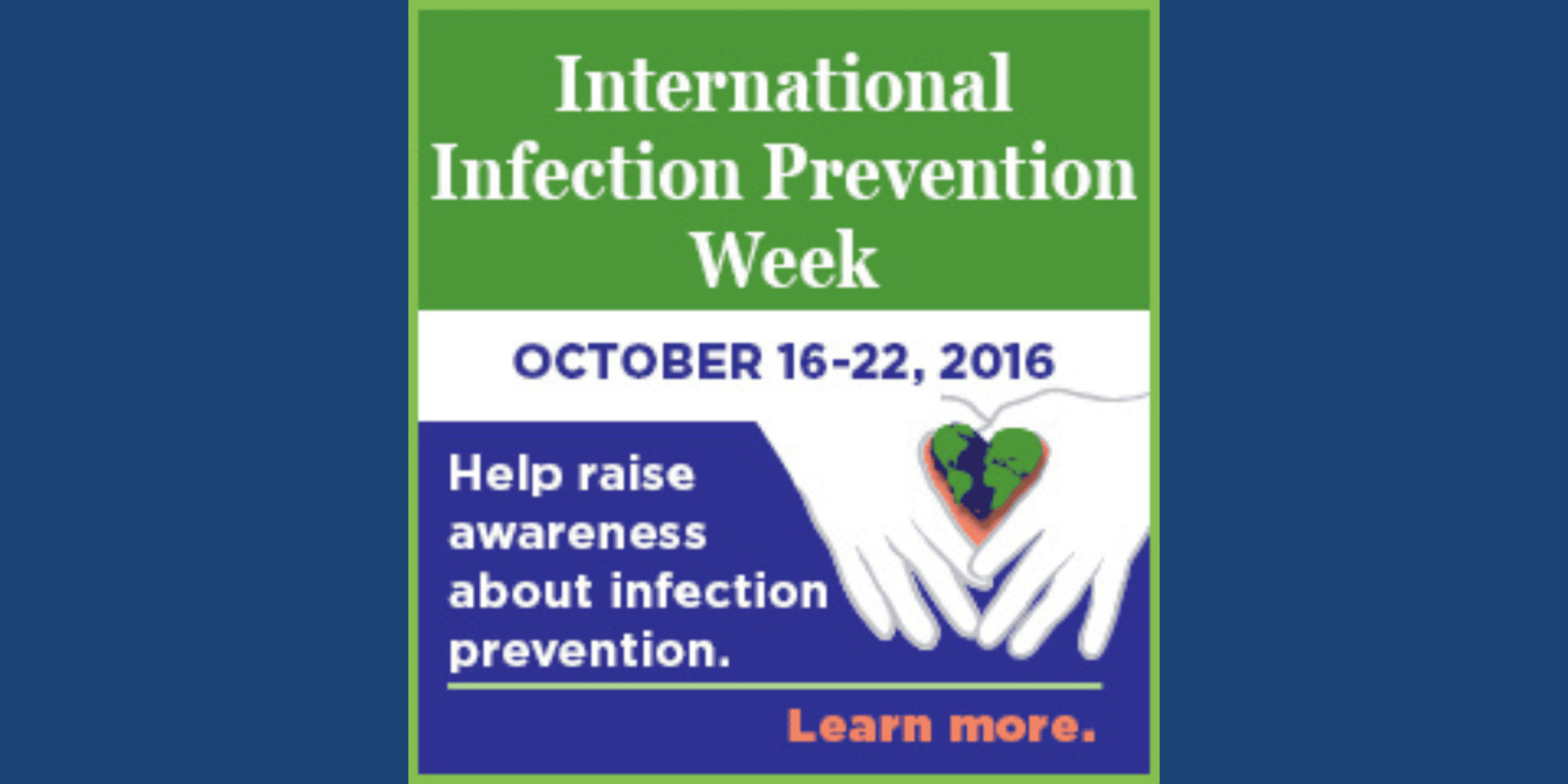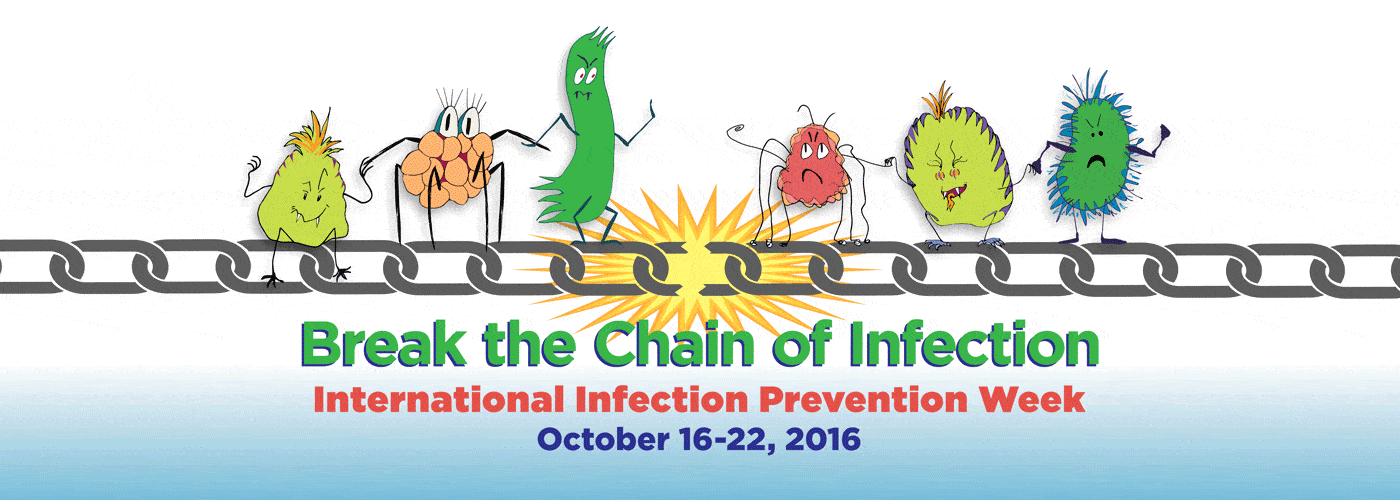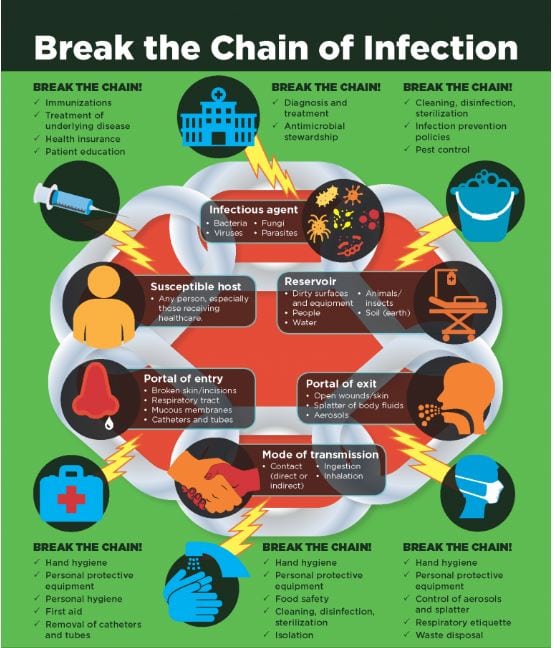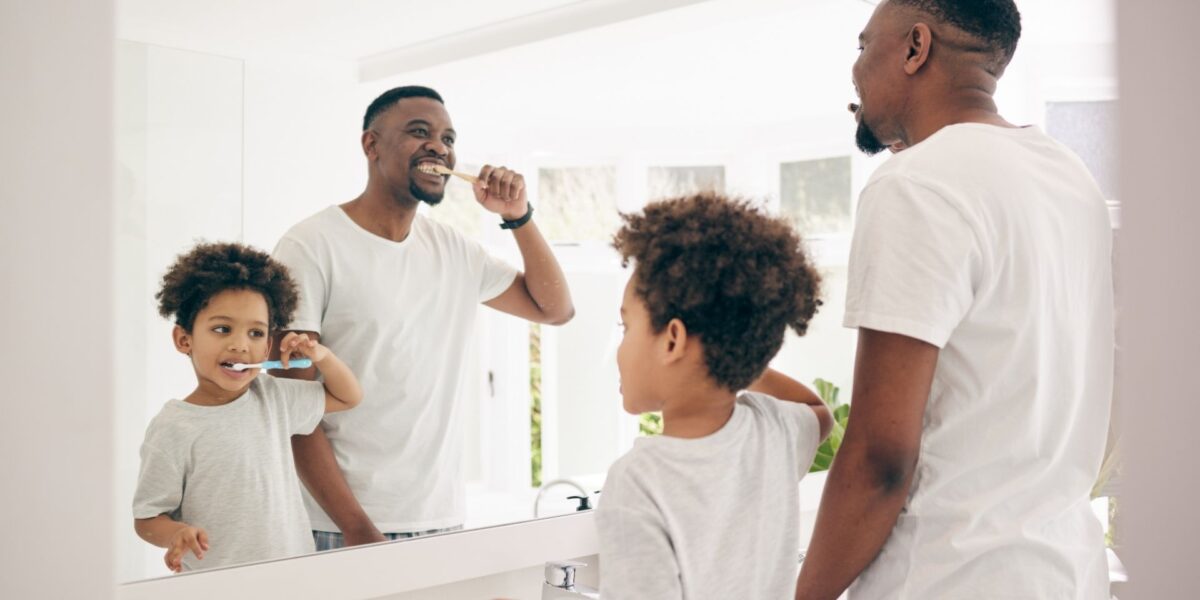
NFID is again partnering with the Association for Professionals in Infection Control and Epidemiology (APIC) as a supporter of International Infection Prevention Week (IIPW). Held annually during the third week of October, IIPW aims to raise awareness about the role that infection prevention plays in improving patient safety. The 2016 theme is “Break the Chain of Infection.”
 There are many different germs and infections inside, outside, and around healthcare settings. Despite the variety of viruses and bacteria, germs spread from person to person through a common sequence of events. No matter the germ, there are 6 points at which the chain can be broken and a germ can be stopped from infecting others. The 6 points include: the infectious agent, reservoir, portal of exit, means of transmission, portal of entry, and susceptible host. The way to stop germs from spreading is by interrupting the chain at any link.
There are many different germs and infections inside, outside, and around healthcare settings. Despite the variety of viruses and bacteria, germs spread from person to person through a common sequence of events. No matter the germ, there are 6 points at which the chain can be broken and a germ can be stopped from infecting others. The 6 points include: the infectious agent, reservoir, portal of exit, means of transmission, portal of entry, and susceptible host. The way to stop germs from spreading is by interrupting the chain at any link.
- Infectious agent is the pathogen (germ) that causes disease
- Reservoir includes places in the environment where the pathogen lives, such as people, animals, and insects, medical equipment, and even soil or water
- Portal of exit is the way the infectious agent leaves the reservoir (through open wounds, aerosols, or coughing, sneezing, and saliva)
- Means of transmission are the ways the infectious agent can be passed on (direct contact, ingestion, or inhalation)
- Portal of entry is the way the infectious agent can enter a new host (through broken skin, respiratory tract, mucous membranes or, for those in healthcare settings, catheters and lines)
- The host is any carrier of an infection or someone at risk of infection.
Healthcare professionals and consumers can ‘break the chain’ by practicing proper hand hygiene, staying current on all recommended vaccines (including annual flu vaccines), covering coughs and sneezes, staying home when sick, and using antibiotics wisely to prevent antibiotic resistance. Play your part during IIPW:
 Download and share the Break the Chain of Infection infographic to raise awareness on how to stop the spread of infection
Download and share the Break the Chain of Infection infographic to raise awareness on how to stop the spread of infection- Join the Thunderclap on Wednesday, October 19 at 12:oo PM ET via Twitter, Facebook, and/or Tumblr, and invite your friends
and followers to do the same! - Attend the Fall 2016 Clinical Vaccinology Course scheduled for November 4-6, 2016 in Philadelphia, PA
- Catch up on free archived CME webinars including Vaccination for Healthcare Professionals and Addressing Antimicrobial Resistance through Vaccines. View all available webinars at: www.nfid.org/archived-webinars.
To join the conversation, follow NFID on Twitter (@nfidvaccines) using the hashtag #IIPW, like us on Facebook, join the NFID Linkedin Group, and subscribe to NFID Updates.
Related Posts

Flawed ACIP Process Leads to Confusion and Distrust
Public health experts and leading healthcare professionals share concerns regarding the June 2025 Advisory Committee on Immunization Practices (ACIP) meeting on US immunization policy …

Empowering Men to Prioritize Health
Staying up to date on all recommended vaccines and taking other steps to prevent illness helps ensure men are ready for what matters most—showing up for loved ones or simply enjoying life …

Experts Sound Alarm after ACIP Members Removed
Public health experts and leading healthcare professionals share concerns on the removal of all 17 members of the Advisory Committee on Immunization Practices (ACIP), which advises the Centers for Disease Control and Prevention (CDC) on the use of vaccines in the US
